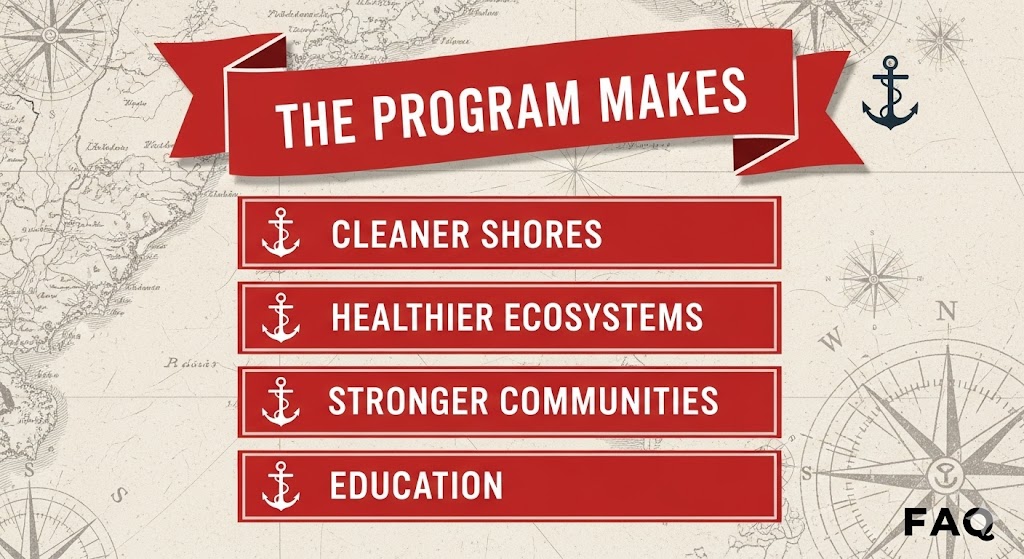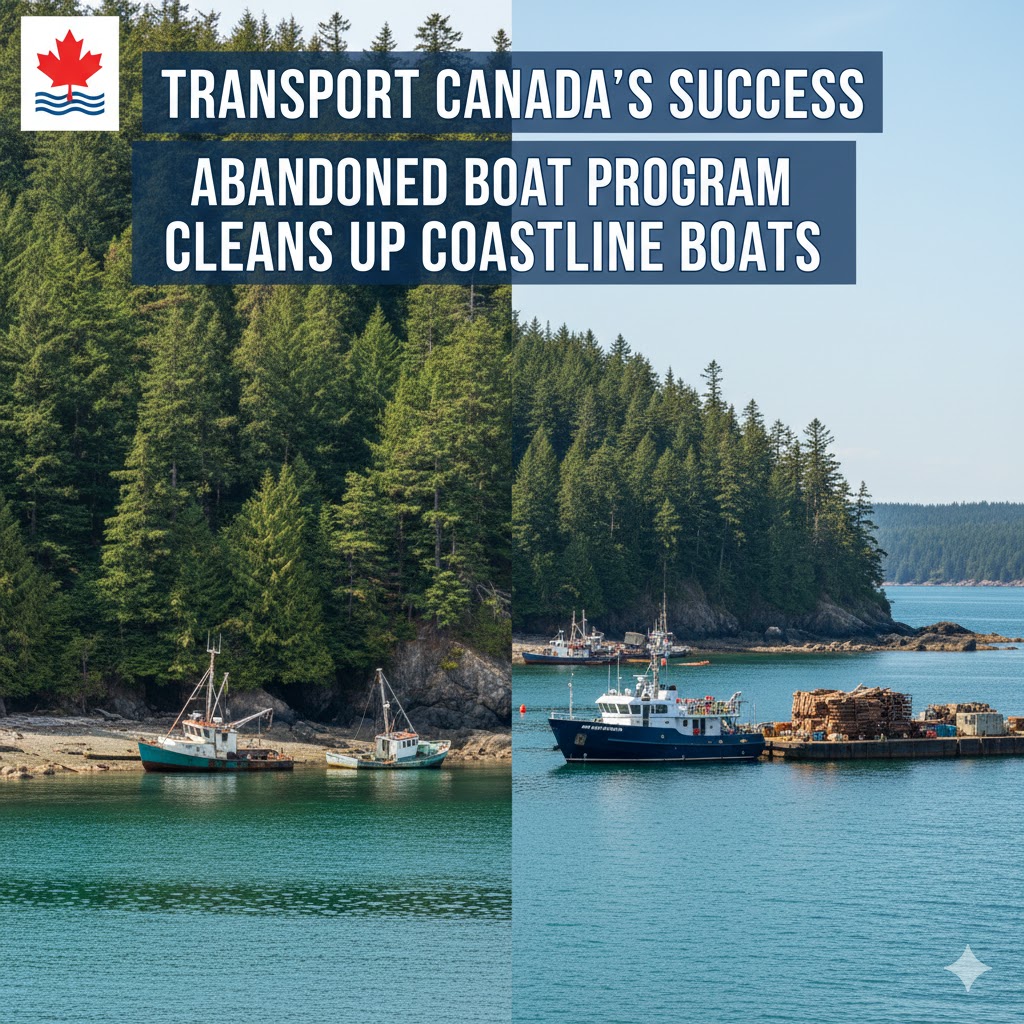Canada’s coastlines are a national treasure, but abandoned boats pose serious environmental, safety, and navigational risks. Our team at the National Vessel Registry Center Corp. recognizes how important it is that these derelict crafts are managed responsibly — and thanks to Transport Canada the Abandoned Boats Program is doing just that, restoring our shorelines and protecting waterways. As a company who helps with the Transport Canada registry and more, we’re proud of the great work they’ve done.

A New Chapter for Coastal Cleanup
Under the banner of the Oceans Protection Plan, Transport Canada launched the Abandoned Boats Program (ABP) to tackle the complex issue of derelict boats. These aren’t just old wrecks — they can be pleasure crafts or even large steel boats with structural failure.
But by providing grant and contribution funding, the program enables assessment, removal, and disposal of abandoned small boats that pose hazards. It’s important to remember that there’s a lot more to the government than just the Transport Canada registry, licencing, and so forth.
According to Transport Canada:
“The call for proposal for assessment and removal (A&R) projects … only one application is required for both assessment and removal of abandoned boats.”
This simplified process helps communities and local organizations take direct action.

Real Results Along British Columbia’s Coastline
One of the most compelling success stories comes from British Columbia. In 2019, Salish Sea Industrial Services — an Indigenous-owned business — used funding from the Abandoned Boats Program to clean up a stretch of shore on Salt Spring Island.
Rob Menzies, Operations Manager at Salish Sea, described the situation: a beach at Fulford Harbour was littered with nine abandoned boats, making the shoreline unusable. Thanks to ABP grants, his team:
- Removed all nine boats
- Transported them using barges and cranes
- Recycled or safely disposed of materials after testing for hazardous waste
Menzies noted that in total, his group removed 17 boats that year — transforming a “disastrous” coastal stretch into a clean, accessible beach where people now enjoy sitting, waiting for ferries, or just taking in the view.
When boats are deeply submerged, the work can be extremely technical: for a 30–40 foot sailboat under water, commercial divers are deployed to attach cables, then lift it over the course of a full day. Once ashore, salvaged boats are tested for toxins, then sent on for recycling or proper disposal, depending on what materials are found.
The Legal Backbone: Accountability and Prevention
The ABP doesn’t just fix the problem — it works alongside law. Thanks to the Wrecked, Abandoned or Hazardous Vessels Act, it’s illegal to abandon your boat.
Under this legislation:
- Transport Canada can take possession of vessels if owners are unreachable.
- Owners of abandoned or dilapidated boats may be held responsible for removal costs.
- Authorities can designate a Receiver of Wreck to manage boats when ownership is unknown.
This legal framework ensures those who abandon their crafts can face consequences, while also giving government bodies the power to act when the owner can’t be located. Even if your boat is not on the Transport Canada registry, we all benefit from this.

How the Program Helps Communities
The benefits of removing abandoned boats go beyond environmental protection. Here’s how our service — through providing essential forms for the Transport Canada registry, small vessel register, and pleasure craft licence — supports the broader mission:
- Cleaner shorelines: Removing sunken or derelict boats clears hazards, making waterways safer and more enjoyable.
- Healthier ecosystems: By recycling or disposing of materials correctly, the program prevents contamination from chemicals, heavy metals, and other pollutants.
- Stronger communities: When beaches and harbors are restored, local economies can thrive — tourism, ferry services, and harbor usage all benefit.
- Partnerships with Indigenous groups: Programs like Salish Sea’s illustrate how collaboration with Indigenous-owned businesses helps deliver environmental stewardship and social impact.
- Lifecycle education: The ABP’s education and awareness component raises awareness among small boat owners about responsible end-of-life management.
How Proper Transport Canada Registration and Licencing Prevent Abandonment
One of the most effective long-term defenses against abandonment is ensuring your boat is properly registered and licensed. Here’s how that ties into responsible boating:
- By getting on the Transport Canada registry through our portal, you make your ownership trackable. That helps authorities reach you if there’s ever an issue.
- Registering on the small boat register keeps your craft on official radar — making it more difficult to simply disappear from the system.
- Maintaining a valid pleasure craft licence establishes you as a lawful owner. If your boat were ever abandoned, Transport Canada or other bodies may be able to tie the craft back to you through licence records.
These registrations and licences are not just bureaucratic paperwork; they serve as preventive tools. They help avoid situations where boats are left to decay in the water because owners vanish or neglect their responsibilities.
When ownership is clear and documented, authorities are more likely to engage with boat owners before an abandonment becomes a full-scale cleanup project.
And, of course, should it be required, use a Transport Canada change of ownership to maintain the paperwork is correct. That way, the correct owner can be reached when necessary.
The Reasons Our Transport Canada Registry Service Matters in This Context
At the National Vessel Registry Center Corp., we make it easier for boat owners to handle the formalities of registration and licencing. While we don’t personally remove abandoned boats, our service provides the online portal and forms needed to:
- Secure Canadian boat registration for a small or large craft
- Access the small boat register for detailed tracking
- Apply for or renew a pleasure craft licence
By helping you maintain proper records, we support compliance with the Wrecked, Abandoned or Hazardous Vessels Act. Responsible ownership makes it less likely your craft ends up abandoned — and more likely that, if needed, authorities can find and contact you. That contributes to a safer, cleaner coastline for all.
Looking Beyond the Transport Canada Registry: Momentum and Impact
Since 2017, 223 boats have been removed under the Abandoned Boats Program.
Each removed boat is a step toward healthier marine ecosystems, more accessible harbours, and safer waterways. These achievements underline how Transport Canada is delivering on its commitment through the Oceans Protection Plan.
If you own a boat or are managing multiple crafts, using our portal for getting and staying on the Transport Canada registry or securing your pleasure craft licence not only ensures you’re compliant — it helps prevent abandonment in the first place.
Through collaborative efforts like the Abandoned Boats Program and responsible ownership, we all contribute to cleaner, safer coastlines across Canada.

